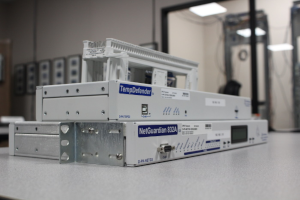Check out our White Paper Series!
A complete library of helpful advice and survival guides for every aspect of system monitoring and control.
1-800-693-0351
Have a specific question? Ask our team of expert engineers and get a specific answer!
Sign up for the next DPS Factory Training!

Whether you're new to our equipment or you've used it for years, DPS factory training is the best way to get more from your monitoring.
Reserve Your Seat TodayIt may not be often, but there are times where the best fix isn't always a patch - it's a reset.
That's exactly what a DPS client decided to do after years of system changes, tech turnover, and well-meaning people doing things differently.
They weren't angry, and they weren't having major system failures. But, they knew something wasn't right. They couldn't trust their monitoring the way they wanted to.
To fix this lack of trust, they reached out and asked:
"Can we just wipe everything and rebuild this from scratch - with your help?"
The answer is yes, you can. In fact, sometimes that's the smartest move you can make. I'll walk you through what led to their decision, what we did to help, and how you can apply the same strategy when your system starts to feel like a black box.

This client had been using NetGuardian RTUs and T/Mon for a while. The hardware was fine and the software worked. But, unfortunately, the configuration and alarm database had started to get messy.
Over the years, multiple people had configured the system. Some knew the platform well while others were learning as they went. Some changes were documented and others weren't.
As one tech put it:
"Some of it's the old method of setting things up. Some of it's new. It just kind of grew over time."
That kind of organic system growth is common (and understandable). You do what you need to do in the moment. You install new gear, you repurpose older configurations, and you make it work.
But eventually, those patches stack up.
Even though everything was still technically working, it had become harder and harder to trust.
That's when this client called us.
This client hadn't ignored the problem. They'd already done some internal cleanup. They also tried to standardize things, and they even looked through manuals and old notes.
But there's only so much you can do when:
As one person mentioned during our call:
"I have very little experience with T/Mon. I've worked with NetGuardians quite a bit, but we were using a different manager system before."
That's a common scenario we see. Techs have solid alarm monitoring knowledge, but no specific training on T/Mon or our current best practices. That creates a knowledge gap that just can't be filled with guesswork or outdated spreadsheets.
When no one really knows how everything fits together anymore, you're back to operating with alarm-visibility risk.
The right move in this situation was to stop trying to fix things and start a fresh alarm database during a hardware upgrade. And that's exactly what this client decided to do.
Instead of spending more time guessing or piecing things together, they opted for:
They asked us to help them wipe their old configuration and build a new one from scratch. That way, they could be sure every setting, every alarm, and every graph was correct for their network today - not five years ago.
This wasn't about throwing away equipment. The NetGuardians and T/Mon were still perfectly good. This was about getting the configuration back to a good state.
The client also requested on-site training for key members of their team. They didn't want a just generic class. They wanted focused, hands-on help that addressed their exact environment, their devices, and their real-world issues.
That's exactly what our "on-site training and turn-up assistance" is built for. Whether you're doing a new install or cleaning up an old one, this training can help. It covers everything from training to forensic config analysis.
"We're fine if it costs a little," they said.
"We just need a quote so we can get it approved."
They knew the investment would pay for itself in reduced downtime, fewer false alarms, and a team that actually felt comfortable using the tools.
Part of the cleanup involved T/Mon trend graphs. They were trying to use T/Mon's built-in graphing tools, but the data wasn't populating. At first glance, it looked like something was broken.
But it wasn't broken, it just hadn't been set up to record curves.
That's a small detail, but it's a perfect example of why these cleanup projects are so important. T/Mon is a powerful tool, but if you don't fully understand how it works, it's easy to miss those key setup steps.
In this case, we even created a custom screen-recorded video to show them exactly how to build graphs once the data started coming in. That way, they'd have something to refer back to even after our visit.
If this story sounds familiar, it's because it happens all the time.
At DPS, we've been building remote monitoring gear for nearly 40 years now. We know that your monitoring system doesn't just stay static. It changes, it grows, and sometimes it gets messy.
That's why we offer more than just gear. We offer guidance.
We support clients going through a monitoring reset by:
Most vendors want to ship you the box and call it a day. At DPS, we'll actually come to your site and walk through your configuration with you. We'll:
You don't have to "fly solo" or learn by trial and error.
We don't believe in one-size-fits-all training. Some teams need T/Mon from scratch, while others just want help with advanced features. We tailor our on-site sessions to your experience level and your actual gear.
In this case, the client knew NetGuardians well. Since they just needed help with T/Mon and graphing, that's where we focused.
A lot of our clients love quick-reference materials and videos. That's why we create custom training clips and send them to you directly. Whether it's a screen share walkthrough or a quick tutorial, we make sure you don't have to rely on memory alone.
Not every client needs a full system wipe - but more do than you might think.
If your monitoring system feels cluttered or inconsistent, here are a few signs that a reset might be worth considering:
If you're nodding "yes" to these common failure points, you're not alone. And you don't have to fix it alone, either.
When you clean up your monitoring system - and train your team on the process - you unlock a ton of benefits:
Every day, I talk to network managers who are struggling to keep their monitoring under control. Sometimes it's old gear, sometimes it's outdated configs, and sometimes it's just a team that's not fully trained yet.
No matter where you are in that process, we can help.
Here's what I recommend to my clients:
You don't need to live with a cluttered, confusing monitoring system. Let's clean it up - together.
Call me at: (559) 454-1600
Email: sales@dpstele.com
You'll get direct help from someone who's done this hundreds of times before. I'll walk you through it, just like I did with this client.
Let's build a monitoring system you can actually trust.

Andrew Erickson
Andrew Erickson is an Application Engineer at DPS Telecom, a manufacturer of semi-custom remote alarm monitoring systems based in Fresno, California. Andrew brings more than 18 years of experience building site monitoring solutions, developing intuitive user interfaces and documentation, and opt...